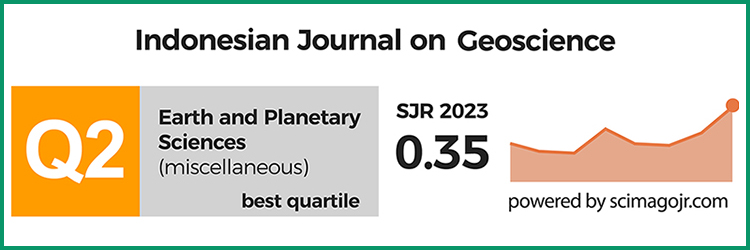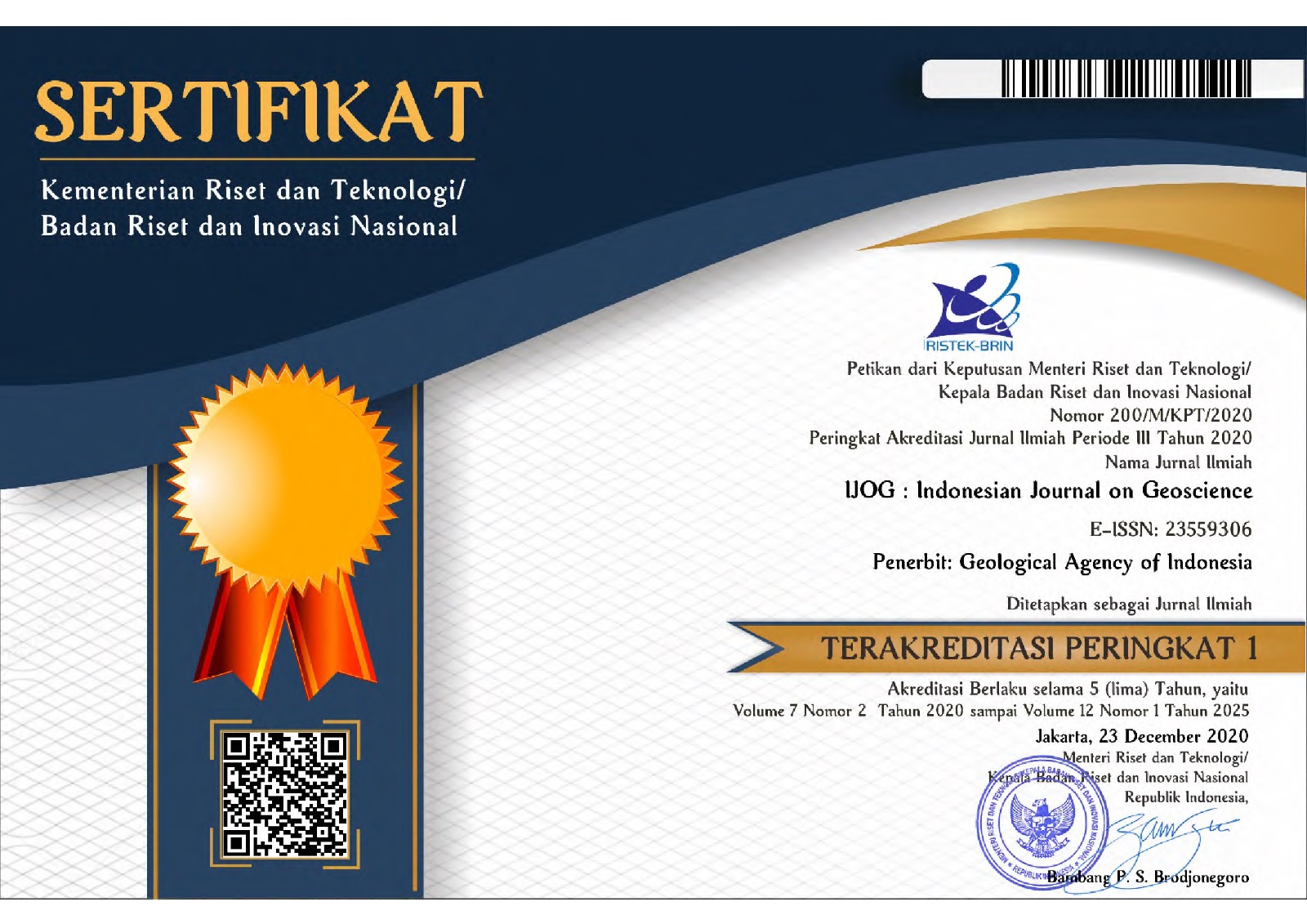The Evolution of Gajahmungkur Paleovolcano, Wonogiri, Central Java, as A Reference to Revize the Terminology of “Old Andesite Formation”
DOI:
https://doi.org/10.17014/ijog.5.4.263-268Keywords:
Gajahmungkur paleovolcano, statistical interrelation, volcanic facies, Old AndesiteAbstract
Gajahmungkur is a Tertiary paleovolcano located in Wonogiri Regency, Central Java. The volcanic product of this volcano are widely distributed and composed of important elements of the stratigraphic sequence in the Southern Mountain area. The volcanic products so far have been simply classified as “Old Andesite Formation” which apparently is not in line with the stratigraphic code and the Indonesian Stratigraphic Code. The description of paleovolcano therefore might contribute to the revision of the “Old Andesite Formation”. The evolution of Gajahmungkur paleovolcano commenced with the formation of a submarine volcano, and then at the second phase a composite volcano emerged above sea level forming a volcano island. The third phase was the self destruction resulting in a formation of a caldera. Pumiceous components dominated the products. At the fourth phase, the activities began to decline producing more basaltic rocks. The statistical analysis of the interrelation between various physical properties of the clastic rocks leads to the identification of volcanic facies and the location of the paleovolcano vent.
References
Bothe, A. Ch. D., 1929. Djiwo Hills and Southern Range, Fourth Pacific Science Congress Excursion Guide, 14 pp.
Hartono, G., 2010. Peran Paleovolkanisme Dalam Tataan Produk Batuan Gunungapi Tersier Di Gunung Gajahmungkur, Wonogiri, Jawa Tengah. Disertasi Doktor di Fakultas Teknik Geologi, Universitas Padjadjaran, Bandung, p.74-176.
Lipman P.W. and Mullineaux, D. R., 1981. The 1980 Eruption of Mount St. Helens. US Geological Survey Professional. Paper 1250, Washington. DOI:10.1017/S0016756800025218
Marks, P., 1957. Stratigraphic Lexicon of Indonesia, Scientific Publication No. 31, Geological Series, Geological Survey of Indonesia, Bandung, 145 pp.
Martojoyo, S., Koesmono, M., and Sudradjat, A., 1973. The Indonesian Stratigraphic Code. Indonesian Association of Geologists.
Martojoyo, S. and Djuhaeni, 1996. The Indonesian Stratigraphic Code. Indonesian Association of Geologists, Jakarta, 25 pp.
Samodra, H., Gafoer, S., and Tjokroseputro, S., 1992. The Geological Map of Pacitan Quadrangle, scale 1:100.000. Geological Research and Development Center, Bandung.
Setijadji, L. D. and Watanabe, K., 2009. Updated Age Data of Volcanic Centers in Southern Mountains of Central-East Java Island, Indonesia. Proceedings of International Conference of Earth Science and Technology, Gajah Mada University, Yogyakarta, p. 1-7.
Smyth, H.R., Hall, R., and Nichols, G.J., 2008. Cenozoic Volcanic Arc History of East Java, Indonesia: The stratigraphic record of eruptions on active continental margin. The Geological Society of America, Special Paper 436, p. 199-222. DOI:10.1130/2008.2436(10)
Surono, Sudarno, I., and Toha, B., 1992. The Geologic Map of Surakarta Quadrangle, scale 1:100.000. Geological Research and Development Center, Bandung.
Surono, 2008. The Sedimentation of Semilir Formation in Sendang Village, Wuryantoro, Wonogiri, Central Java. Journal of Geological Resources, 18(1), p.29-41.
Van Bemmelen, R. W., 1949. The Geology of Indonesia, Vol. IA, The Hague, Martinus Nijhoff, 732 pp.
Vessel, R. K and Davies, D. K., 1981. Non Marine Sedimentation in Active Fore Arc Basin, SEPM Special. Publication., No. 31, p. 31- 48.



















